Design for the whole brain
Design for the whole brain

We as human beings, are made up chemical components - electrical impulses, hormones, blood, muscles, bones and other elements that are our bodies. Sitting on top of this, are our highly developed brains, which act as the control tower for the rest of the body.
It is this brain that controls how we view the world, what we like and don’t like, how we react to our environment and how we make decisions. It is also because of this brain, that we are driven by our desires and emotions when deciding what products we like and what we buy.
As designers and marketers, if we can understand what drives those desires and how to satisfy them, not only with our products, but with the whole package that surrounds the product experience, then that product is more likely to succeed out in the world.
So, considering that our primal desires, emotions and decision making processes are centred in the brain – why not design for the WHOLE brain?
According to the theory proposed by Paul MacLean in the 1960's, the brain is thought to consist of 3 parts, called the Triune Brain. These are:

The reptilian brain
The instinctive brain, controlling our primal desires - the need for keeping safe, food & drink and sex.
The mammalian brain
The ‘feeling’ part of the brain, driven by emotions.
The new brain
The ‘thinking’ part of the brain – responsible for intellectual and rational thought, language and all the aspects that make up our personality.
So, how do we talk to all three parts of the brain?
Speaking to the Reptilian Brain
This is the oldest, instinctive and primal part of the brain, concerned with safety, food and sex. We need these things on a subconscious level. It is actually hard wired into our DNA.

Food and Sex sells
We love to see pictures of food/drink and attractive people.
This doesn’t mean that the images we see of these people have to be overly sexual, but it certainly helps if an attractive person is seen wearing the watch or clothes you are trying to sell, rather than an average person walking down an average street.
When we portray attractive people drinking and eating, in a safe situation, more than one aspect of the primal brain is satisfied.
The primal brain responds instinctively and subconsciously. It has been proven that a single, powerful main image on a website, with a small amount of text is more effective than a carousel with multiple images. One reason is that a powerful image of a product in the right setting or an aspirational image of people, satisfies the primal brain.
If you have choose one image to represent your product, you take the time over it, don’t you? Users also can really focus on one core message, without distractions, and imagine themselves as part of the lifestyle that that image is portraying.
Ready for fight or flight?
Another way to immediately get the attention of our audience is through addressing the flight or flight instinct. The primal brain likes to feel safe, there is not much else you can think about if there is a tiger chasing you, your heart rate increases, your palms get sweaty and adrenalin surges through your body - your primary goal is to get out of that situation.
We can trigger this response with images of someone in danger - this immediately gets a user’s attention. Once we have that attention with danger signals, we can then start to talk to the user in other meaningful ways.
Speaking to the Mammallian Brain
This is the part of the brain concerned with emotions, and how things make us feel. Without this part of the brain, we cannot make decisions or judgements.
Although we like to believe that we are rational beings, we mostly make decisions by how something makes us feel.
It’s important to understand how we respond on a psychological level so we can better target the message to our emotional brain. This part of the brain can be coerced into thinking a certain way that often overrides rationality.
We are empathetic creatures
The Mammalian Brain responds to images that draw on our natural empathy for others, such as a child living in poverty on a charity website, or a child shown benefiting from a donation given.
This is also why people respond well to smiling faces and eyes, or people looking directly at them - we are much more likely to trust people when they look us in the eye.
We respond to colour more than we think
While our emotional responses can be manipulated with images, sounds and smells, our response to colour is subconscious, meaning we don’t actively look at a colour and analyse how it makes us feel.
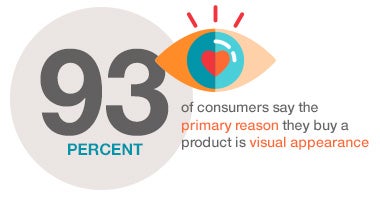

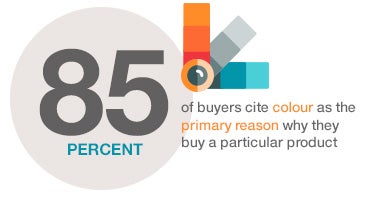
Colour can stimulate a variety of responses…..
For example, it is no coincidence that a large number of food brands use red and yellow in their branding as this is thought to grab attention and stimulate appetite.
Also, images of food are often bathed in a golden glow to make it look tastier and appeal to our feelings of warmth and good feelings we get when sharing food with others.
So, colour can sway our thinking, increase or suppress our appetite, convey trust and elicit a range of emotions that we are not even aware of!
Speaking to the New Brain
This is the thinking or rational part of the brain that processes information other parts of the body and guides our decision making. However it also slows down decision making if not given the correct information at the right time as it tries to ‘rationalise’ ideas and input.
So to appease this new brain, its load must be reduced by limiting the amount of information that needs to be processed.
The rational brain is… rational and not impulsive, it analyses all decisions and whilst the other parts of the brain yell loudly to try to override it, the more you can do to reassure it and make it feel safe the better and easier it will be to get those decisions over the line.
It’s important to simplify things for this brain, to show a clear, ordered path on a website with no obstacles or barriers so there are no warning signals for it to send out and delay decision making.
We can help this brain make decisions by giving enough information in one go so the choices are easier:
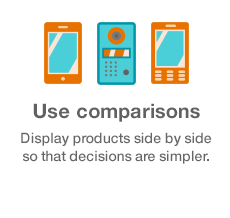
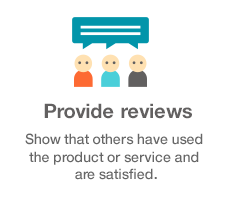

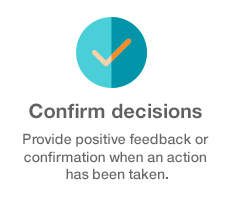
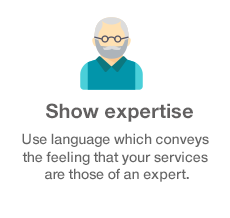
So, design for the brain
Even though we have one brain that controls our bodies, it is divided into 3 sections, which work together in unison to create all of our actions.
If we can tap into and create experiences that speak to each of the 3 parts of the brain, the primal, the mammalian and the new, then we’ll provide a much more successful overall user experience for our customers.
When well designed and cohesive, this experience will just seem natural because no red flags will be raised, trust will be established and the decisions will feel natural and comfortable, all because we understand how the brain works.
References
www.neuropsychotherapist.com/the-triune-brain

